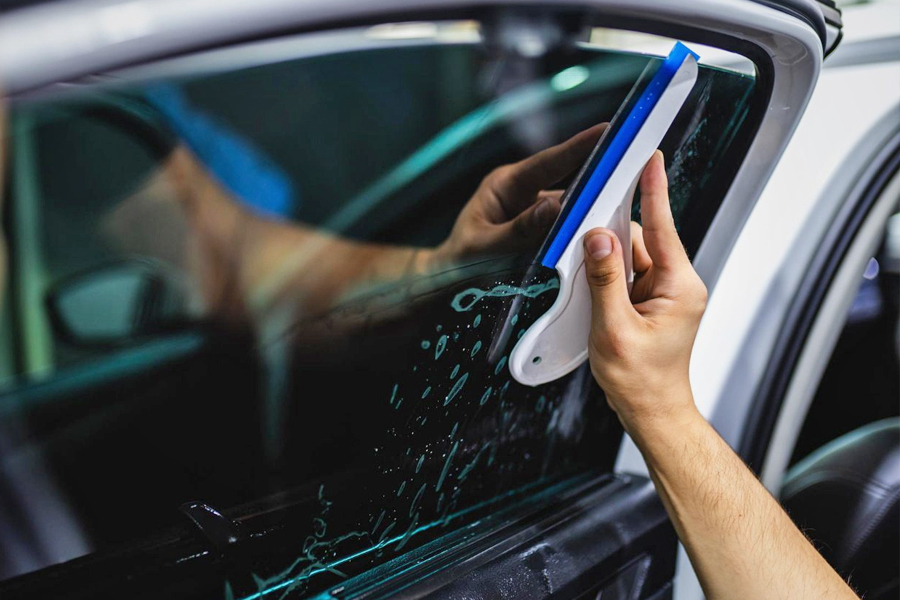Automobile Window Tinting: Locate the Best Deals and High Quality Providers Neighboring
Automobile Window Tinting: Locate the Best Deals and High Quality Providers Neighboring
Blog Article
Home Window Tinting Regulations and Standards: What You Required to Know Prior To Tinting Your Cars And Truck
Prior to continuing with home window tinting for your lorry, it is necessary to acquaint yourself with the diverse regulations and standards that control this method across different states. These policies dictate the permitted degrees of color darkness, typically determined by noticeable light transmission (VLT) percentages, and consist of details specifications for front windscreens intended at making certain road safety.
Review of Home Window Tinting Regulations
Window tinting legislations are frequently subject to variant throughout different jurisdictions, mirroring local laws and safety factors to consider. These regulations determine the permitted levels of tint darkness and reflectiveness on lorry home windows, ensuring that chauffeurs keep appropriate presence while additionally protecting versus hazardous UV rays and warmth.
A lot of policies classify window tinting based on the Visible Light Transmission (VLT) percentage, which shows the quantity of light that can pass via the home window. Generally, reduced VLT portions represent darker tints. Laws commonly distinguish between the front, side, and back home windows, with stricter limitations related to the front windshield to improve safety for both the motorist and other roadway individuals.
Compliance with home window tinting regulations is essential, as offenses can result in fines, required removal of the tint, and possible boosts in insurance premiums. It is vital for vehicle owners to acquaint themselves with neighborhood laws prior to continuing with window tinting setups.
State-by-State Tint Regulations
Comprehending the details window tinting laws in each state is vital for automobile proprietors looking for to abide by the law. Each state in the U.S. has developed its own set of policies controling window tinting, which can vary considerably. These guidelines frequently dictate the allowed levels of tint darkness, the kinds of home windows that can be tinted, and any kind of clinical exemptions that may apply.
As an example, states like The golden state have rigorous constraints on color darkness for front home windows, while others, such as New Mexico, may permit darker colors. Furthermore, specific states mandate certain exposure percents for numerous windows, consisting of the windshield, front side windows, and rear home windows. It is vital for auto proprietors to familiarize themselves with their state's legislations to avoid prospective fines or fines.
Additionally, some states may call for a qualification sticker label to be positioned on tinted home windows, indicating conformity with state regulations. Failure to stick to these guidelines not just takes the chance of legal consequences yet can also impact security and presence while driving. As a result, automobile proprietors need to perform complete research study or get in touch with regional authorities to make certain full understanding and conformity with state-by-state color guidelines.
Allowed Tint Types and degrees
Lots of lorry owners may be surprised to discover that permitted tint degrees and types differ widely throughout different states. Each state has established its own regulations concerning the permitted darkness and reflectivity of window tint, frequently gauged by Visible Light Transmission (VLT) percents. VLT describes the amount of light that can go through the tinted home windows; therefore, a reduced percentage suggests a darker tint.

Furthermore, the kinds of color materials enabled can differ, with some states banning metallic or mirror-like coatings. It description is vital for automobile proprietors to familiarize themselves with their state's particular regulations to ensure compliance. Non-compliance can cause fines, required elimination of the color, or various other legal effects, making it essential to understand these regulations prior to waging installation.
Medical Exemptions for Tinting
While not all states provide allowances for clinical exceptions relating to home window tinting, those that do recognize the necessity for certain people to boost presence and comfort due to clinical problems. Various clinical conditions, such as lupus, skin cancer cells, and particular eye problems, can render people especially conscious sunlight. Consequently, these individuals may need darker tints to safeguard themselves from hazardous UV rays and glare.

It is very important to note that despite a medical exception, there might still be restrictions on the degree of color allowed. Compliance with state laws makes certain that individuals are both protected and within lawful limitations. Those taking into consideration medical exceptions ought to contact their local Department of Electric motor Autos or comparable authority to understand the needs and treatments required to apply for an exception properly.
Fines for Non-Compliance
Falling short to abide by window tinting regulations can bring about significant penalties, which vary by state. Regulation enforcement firms are empowered to provide citations for lorries that do not follow the specified tinting regulations. These fines commonly consist of penalties, which can range from small total up to several hundred dollars, relying on the extent of the infraction and the state in inquiry.
In some jurisdictions, repeated offenses may cause escalating fines or added penalties, such as required court looks. Non-compliance might require the elimination of illegal tinting, usually at the owner's expense. In extreme cases, habitual transgressors may encounter suspension of their lorry registration till conformity is attained.
Additionally, insurance policy implications might develop from getting numerous citations for home window color offenses. Insurance companies might view such offenses as an indication of riskier habits, potentially leading to raised costs or trouble in protection.
To avoid these fines, it is crucial for lorry proprietors to familiarize themselves with their neighborhood home window tinting legislations and make sure that their car complies (Window Tinting). This aggressive strategy not just prevents lawful implications however likewise advertises roadway security
Final Thought

A lot of policies categorize window tinting based on the Visible Light Transmission (VLT) percent, which suggests the quantity of light that can pass via click over here now the home window. Conformity with home window tinting regulations is essential, as infractions can result in fines, mandatory elimination of the tint, and possible rises in insurance policy costs.Understanding the specific home window tinting regulations in each state is essential for car proprietors looking for to conform with the regulation. These regulations commonly determine the permitted degrees of navigate to this site tint darkness, the types of windows that can be tinted, and any kind of medical exceptions that might apply.
For circumstances, states like California have rigorous restrictions on tint darkness for front windows, while others, such as New Mexico, may allow darker colors.
Report this page